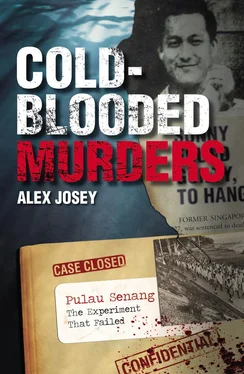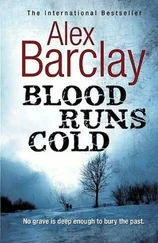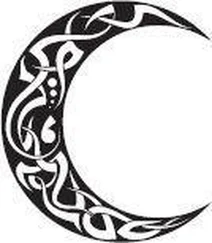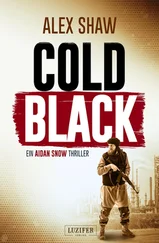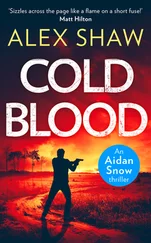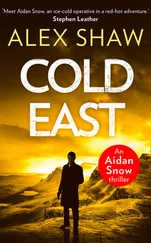Alex Josey - Cold blooded murders
Здесь есть возможность читать онлайн «Alex Josey - Cold blooded murders» весь текст электронной книги совершенно бесплатно (целиком полную версию без сокращений). В некоторых случаях можно слушать аудио, скачать через торрент в формате fb2 и присутствует краткое содержание. Жанр: Криминальный детектив, на английском языке. Описание произведения, (предисловие) а так же отзывы посетителей доступны на портале библиотеки ЛибКат.
- Название:Cold blooded murders
- Автор:
- Жанр:
- Год:неизвестен
- ISBN:нет данных
- Рейтинг книги:5 / 5. Голосов: 1
-
Избранное:Добавить в избранное
- Отзывы:
-
Ваша оценка:
- 100
- 1
- 2
- 3
- 4
- 5
Cold blooded murders: краткое содержание, описание и аннотация
Предлагаем к чтению аннотацию, описание, краткое содержание или предисловие (зависит от того, что написал сам автор книги «Cold blooded murders»). Если вы не нашли необходимую информацию о книге — напишите в комментариях, мы постараемся отыскать её.
Cold blooded murders — читать онлайн бесплатно полную книгу (весь текст) целиком
Ниже представлен текст книги, разбитый по страницам. Система сохранения места последней прочитанной страницы, позволяет с удобством читать онлайн бесплатно книгу «Cold blooded murders», без необходимости каждый раз заново искать на чём Вы остановились. Поставьте закладку, и сможете в любой момент перейти на страницу, на которой закончили чтение.
Интервал:
Закладка:
Therefore, they submitted, this evidence was irrelevant and inadmissible, and, as it was put forward in effect as evidence of some other offence or misconduct on his part, was highly prejudicial to Ang’s defence. Furthermore, the prejudicial effect was so disproportionate to any possible evidential value that it ought to have been excluded in fairness to Ang. In any event, the judge, having ruled that the evidence was admissible gave the jury no direction whatsoever as to how it was to be treated or applied. They submitted that if the evidence was admissible at all, he should have directed the jury that, if they thought the occurrence might have been a pure accident, the evidence would be of no assistance to them, and they should also ignore it if it only gave rise to suspicion. The evidence would have been relevant to rebut a possible defence of accident only if they were satisfied that Ang tried to kill Jenny by deliberately causing the accident. They held that the evidence would not sustain such a conclusion.
Ang’s petition to the Privy Council also submitted that Justice Buttrose misdirected the jury as to the effect of circumstantial evidence, in particular as to the way the jury should consider and evaluate the evidence relied upon by the prosecution as showing Sunny Ang’s guilt. Justice Buttrose had said that it was the cumulative effect of the evidence that was important not one isolated link in the chain of circumstantial evidence. He said it would be wrong to consider the case link by link, and reject any one link being by itself as too weak.
While the petitioners did not dispute that such a direction would be proper in a case ‘in which all the pieces of the circumstantial evidence are directed to show that an accused committed the particular act or was responsible for the particular omission which is relied upon as being the act of murder’, it was inappropriate and misleading where, as in Ang’s case, the prosecution alleged a number of acts or omissions, the cumulative effect of some, or all of which is relied upon as contributing the offence.
In Ang’s case, apart from evidence of motive or intention, and evidence as to subsequent conduct, which the prosecution relied upon as showing guilt, the prosecution case was that the death of Jenny was caused by: · Ang taking her scuba-diving in what he knew were dangerous waters and when, as he knew, she was a novice scuba-diver; ·
Ang cutting her flipper causing it to come off in the water and causing her to panic and to get into greater danger; and · his delaying, on a false pretence, for some ten minutes, instead of himself diving in or joining her, or making any effort to rescue her.
In these circumstances the judge’s direction to the jury as to how circumstantial evidence should be regarded was wrong. It was incumbent upon him to consider separately the various acts and omissions for which Ang was alleged to be responsible, and which taken together, made up the alleged crime. Instead, the judge invited the jury to lump all the circumstantial evidence together. He should have brought to their minds that the various pieces of circumstantial evidence were directed respectively to various acts and omissions, the combination of which the prosecution relied upon as constituting the crime of murder.
The petition said that the ‘main ingredient in the alleged crime of murder’ was the cutting of Jenny’s flipper. Ang’s act of cutting it, they submitted, was strongly in issue, ‘and there was some evidence to support the defence contention that it could not have been cut by Sunny Ang at the time and manner suggested by the prosecution’. Had the judge directed the jury correctly on the weight and effect of circumstantial evidence, he would necessarily have invited the jury to consider how the case stood if they were not satisfied that Ang had in fact cut Jenny’s flipper. He should have directed the jury in this context: that they should be satisfied that Ang induced or persuaded Jenny to scuba-dive in dangerous waters and so caused her death. The petition also argued that there was no direct evidence that Ang ever persuaded or induced Jenny to go to the particular spot where she made the dive from which she did not return. There was no direct evidence that Ang cut her flipper.
The petition complained that the Appeals Court followed the learned trial judge in taking the prosecution’s evidence as a whole, instead of distinguishing the various pieces of evidence in relation to the different acts or omission which the prosecution said constituted the offence of murder. “The cutting of the strap of the flipper, either by Ang or with his knowledge, must necessarily have been evidence in a different category.” The Appeals Court, the petition pointed out, said “Ang ‘allowed’ Jenny to go down into waters which he knew were dangerous.” For all these matters complained of, submitted Ang’s legal advisers, he had suffered ‘substantial and grave injustice’, and in consequence Ang petitioned for special leave to appeal against the judgment of the Appeals Court.
The petition was denied.
Psychopath
Ang was a psychopath. Two psychiatrists came to this conclusion after examining him in Changi Jail,
Dr Wong Yip Chong, then the government psychiatrist, saw Ang five times in 16 days in October 1966. He also interviewed his father, mother, sister and two of the brothers, as well as several members of the public with close association with Ang in the past. Dr Wong found Ang in good physical condition, and noted that his intelligence quotient (IQ) was recorded as 128-within the superior intelligence range.
Ang had a good academic record and was among the first 10 in the primary classes and maintained these positions to the secondary level except when he finished at the bottom of the class through playing truant. He completed his Senior Cambridge in 1955, and obtained distinctions in English and Science, and a C3 for Mathematics, thereby obtaining a Grade I certificate. This was obtained with the minimum of effort. Ang claimed that he never studied until the last two weeks of the examination. According to his form master, Maurice Baker, later to become Singapore’s first High Commissioner to India (now professor of English at the University of Singapore), Ang was a fairly quiet boy but bright, and with a great sense of adventure. “If there were a war, he would have distinguished himself.” He was apparently a likeable boy, though conceited. His school records show his conduct to have been good.
In early 1956 he went to work with Dunlops, but resigned after three months in anticipation of discovery by the company of his having ‘irresponsibly and improperly’ diverted some of the company’s products to his own home. He idled away the rest of the year, and in 1957 became a student teacher at Bedok Boys’ School for about six months. His conduct as a student teacher was deplorable. True to his philosophy of maximum results from minimum effort he would leave his pupils’ books to be corrected by his sister or mother. According to the records at the Teachers’ Training College, Sunny Ang was the only student never to attend any classes throughout the term. In 1958 he returned to teaching at St Thomas School, a private school, for one year. There his irresponsible behaviour continued. He was often away from his class. On one occasion he misappropriated school fees, though he later managed to return them to the school.
But in between these two periods of teaching, Ang had tried to become a commercial airline pilot. In May 1957 he was released by the Director of Education from his teacher-in-training course to train as an airline pilot with the aid of a Colombo Plan scholarship. He had always been interested in flying, and earlier that month (on 10 May 1957), he had qualified for his student pilot licence. He obtained his private pilot licence on 29 November, and passed his examinations for his Restricted Flight Radio and Telephone Operator’s Licence in May the following year.
Читать дальшеИнтервал:
Закладка:
Похожие книги на «Cold blooded murders»
Представляем Вашему вниманию похожие книги на «Cold blooded murders» списком для выбора. Мы отобрали схожую по названию и смыслу литературу в надежде предоставить читателям больше вариантов отыскать новые, интересные, ещё непрочитанные произведения.
Обсуждение, отзывы о книге «Cold blooded murders» и просто собственные мнения читателей. Оставьте ваши комментарии, напишите, что Вы думаете о произведении, его смысле или главных героях. Укажите что конкретно понравилось, а что нет, и почему Вы так считаете.
